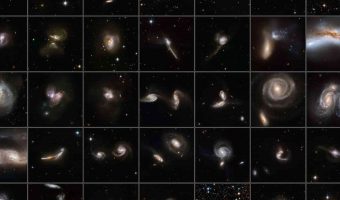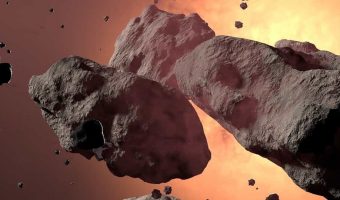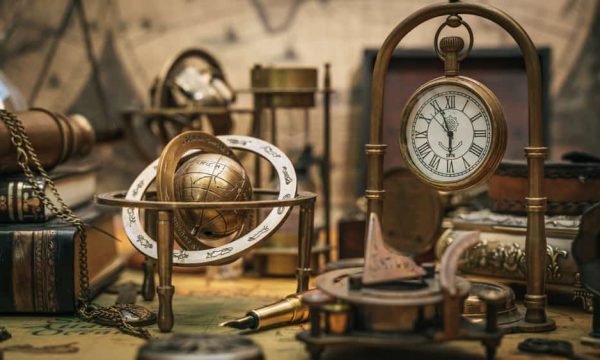
13 Famous Astronomers & Their Mind-Blowing Discoveries
Last Updated: January 23, 2023
Astronomers: scientists focusing on the universe and trying to make sense of how it works. Though our understanding is ever-changing, as our advancements are ever-evolving, as we learn new things about this space in which our home planet is found. Pushing the boundaries of what we believe to be possible through observation and theoretical frameworks, helping us understand the curious vastness that surrounds us in our solar system and everything in between. There have been many notable astronomers throughout history, all of which have added to the field in one way or another, as no matter how small or how large the addition was, it propelled the field and our understanding forward. Each just as important as the last.
Henrietta Swan Leavitt (1868 - 1921)
Henrietta Swan Leavitt was an American astronomer from the State of Massachusetts who worked at the Harvard College Observatory as a human-computer; a job that existed before electronic computers became commercially available. Her work at the time consisted of the examination of photographic plates in which she was measuring and recording the brightness of stars. This led to her discovery of the relationship between luminosity and Cepheid variables – this being a type of star that pulsates radially and differs in diameter and temperature and thus producing changes in brightness.
Henrietta’s discovery has provided astronomers with the ability to measure the distance between galaxies, especially those far off, which came to be known as the ‘standard candle’ – an astronomical object with luminosity, on the cosmic distance ladder (methods used to determine the distance between celestial objects). Prior to this, the methods that existed only allowed astronomers to measure up to hundreds of lights years, Henrietta’s discovery changed this to around 20 million light-years. This in turn stemmed the discovery of the Milky Way, the galaxy in which we reside, being roughly 100,000 light-years in diameter, something that was previously of course unknown.
Though Henrietta, unfortunately, died at the young age of 53, her work went on to influence Edwin Hubble, another American astronomer, who used her discovery alongside spectral shifts to observe and determine that the universe is ever-expanding, and this of course in turn led to the well known Hubble’s Law!
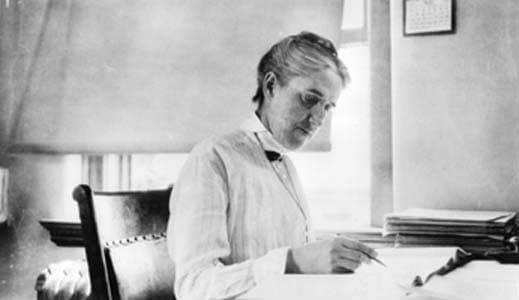
Henrietta working at her desk in the Harvard College Observatory
Edwin Hubble (1889 - 1953)
Edwin Hubble was an American astronomer who is well known for the Hubble sequence, Hubble’s law, Hubble luminosity law, and the Hubble-Reynolds law. Surprisingly in his early years, Edwin was more renowned for his athletic ability rather than his intellect! It was only after years of studying Law, as a promise to his Father despite his years of interest in astronomy as a child, that Edwin finally entered graduate school, with the help of a former professor, to study astronomy in the Yerkes Observatory at the University of Chicago – this is where he went on to receive in PhD in 1917.
However, Edwin did step away briefly from astronomy to join the US Military after the United States declared war in Germany in 1917, after serving until the end of the 1st World War he renewed his studies at Cambridge University where he spelt the year.
Edwin Hubble is incredibly well known for his vast amount of work in astronomy, one of his discoveries being that the universe goes beyond the Milky Way galaxy. Edwin made this discovery in 1924 and was able to prove repeatedly that the nebulae he was observing was way too far to be part of the Milky Way and thus had to be part of galaxies outside of our own.
This of course changed the face of science, once the research was reviewed and accepted as it was initially met with disbelief by many others in the field, but nowadays most declare Edwin to be the pioneer for paving the way for the future astronomers to research nebulae outside of our own galaxy. This then led him to devise what is still one of the most commonly used systems for classifying galaxies by grouping them according to appearance from their photographs and this became known as the Hubble Sequence.
One of his other major contributions to astronomy is Hubble’s Law, though some may argue that whilst Edwin did have the discovery named after him due to his research, astronomers prior to him were already establishing theories around the expansion of the universe.
Edwin’s work was able to demonstrate the rate at which galaxies were moving away from Earth in proportion to their distance, discovering that the further away the galaxy, the faster it was moving away.
Edwin went on to make plenty more discoveries and contributions to the field of astronomy, many winning him awards and even namesakes, such as the crater ‘Hubble’ on the Earth’s moon. Even after death, his name has continued to carry so much respect and knowledge throughout the scientific field and he will certainly remain a huge part of astronomical history.
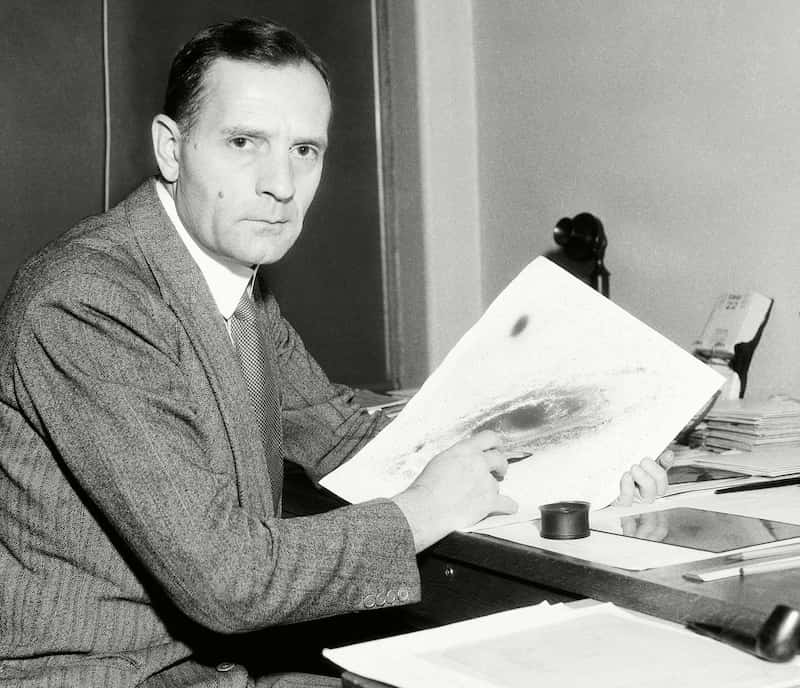
Edwin Hubble holding a picture of a galaxy
Beatrice Tinsley (1941 - 1981)
Beatrice Tinsley was a British astronomer from England, who moved to New Zealand along with her family after the 2nd World War, was the first female professor of astronomy at Yale University. Beatrice moved to America after marrying physicist Brian Tinsley, whom she later divorced 13 years later (1961 – 1974), and it was there that her work at Yale University made major contributions to the understanding of how galaxies evolve, grow, and die.
Beatrice went on to devise new theoretical studies that looked at how the populations of stars age and affect the various qualities of the galaxies that were observable, this then led her onto working on various models that investigated whether the universe was open or closed and her models led to the first-ever approximation of what protogalaxies, also known as a primaeval galaxy, would potentially look like – this being a cloud of gas which is forming into a galaxy.
Thanks to her outstanding work in galaxy evolution, Beatrice went on to receive the Annie J. Cannon Award in Astronomy in 1974, and it was only 4 years later, in 1978, that she became the first female professor of astronomy at Yale University. Though she died at the young age of 40, her last scientific paper was published after her death in the Astrophysical Journal and was done so without revision – a rarity as most academic pieces will only be accepted and published after one or more revisions.
Thanks to Beatrice’s discovery, we know that the universe is forever evolving, forever expanding, forever changing.
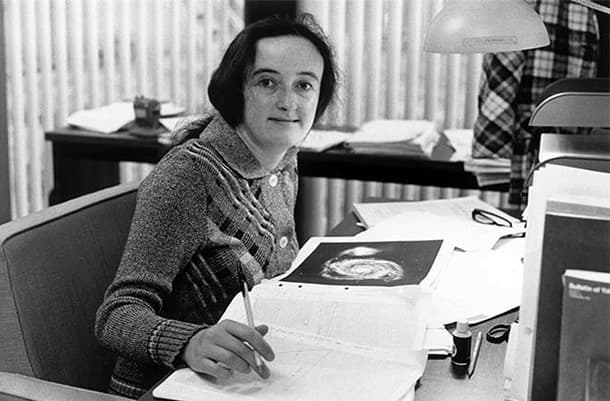
Beatrice studying galaxies at Yale University.
Tycho Brahe (1546 - 1601)
Tycho Brahe was a Danish nobleman who became a renowned astronomer, astrologer, and alchemist in his lifetime. Thanks to his nobility, Tycho was able to receive a well and thorough education and this is where his interest in astronomy was sparked. He was one of the last naked-eye astronomers, which meant he made his observations without the use of a telescope and went on to devise his own model of the universe known as the Tychonic system.
This system correctly identified the moon as orbiting the Earth as well as other planets orbiting the sun, but wrongly believed that the sun orbited the Earth. This went against the Copernican system which stated that the Earth orbited the sun, published 1953, 3 years before Tycho’s birth, but this theory took over a century to become widely accepted and thus explaining why Tycho took a different approach.
However, whilst this was just a small error in his work, he did go on to accurately establish the positions of around 1,000 fixed stars and created detailed mathematical tables that astronomers used for centuries after.
It was then in 1572 that he discovered a ‘new star’, a star in the sky that shone brighter than Venus and where no star was meant to be in the Cassiopeia constellation. Tycho took it upon himself to observe this new star and discovered that it was beyond the moon and was indeed a supernova.
At the time stars were seen as ‘perfect and unchanging’ so the idea Tycho presented that stars could actually change shook the astronomy field at its very core; this too was at a time where the Copernican theory was gaining traction that it was the Sun at the centre of the universe and not planet Earth. The field was changing.
Most notably it was Tycho that was able to prove that comets were not part of Earth’s atmosphere but were actual objects themselves travelling through space. Calling back to Tycho being one of the last naked-eye astronomers, due to the telescope not being invented until 1608, he went on to create his own equipment, most famously the Tychonian Quadrant which was an incredibly large brass mural quadrant that was used to measure the coordinates of astronomical objects, and this invention naturally paved the way for further and more advanced equipment to be developed to propel the scientific field even further.
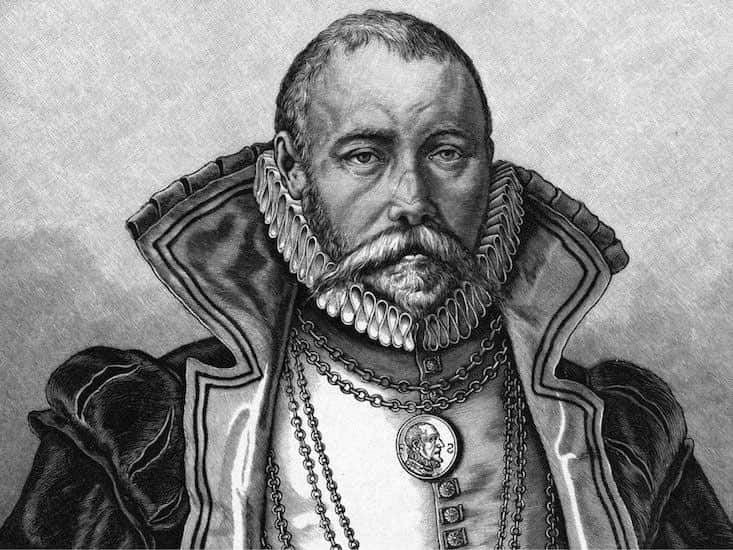
Renaissance astronomer Tycho Brahe looking mighty as hell.
Jane Luu
Jane Luu, a Vietnamese-American astronomer born 1963 in Saigon, Vietnam, immigrated to the United States as a refugee, along with her family, in 1975 after the fall of the South Vietnamese government.
The family eventually settled in Kentucky, after life in refugee camps, in which Jane graduated high school top of her class and ended up valedictorian, and this, in turn, earned her a scholarship to Stanford University.
She gained her bachelor’s degree in physics in 1984 and went on to work at the Jet Propulsion Lab at NASA, her work at the laboratory sparked her interest to venture into astronomy. Whilst Jane was a graduate student, she focused her PhD on looking at links between asteroids and comets, and worked alongside David C. Jewitt, a British-American astronomer, and ended up discovering the Kuiper Belt; one of her most notable discoveries.
The Kuiper Belt was previously thought to contain no objects but it was in 1992, after a total of 5 years worth of observation and the discovery of Pluto and its largest moon Charon being part of the Belt, that they found another object was present after using a telescope on Maunea Kea, a dormant volcano, in Hawaii.
The object they discovered was nicknamed ‘Smiley’, a trans-Neptunian object (a planet or dwarf planet that that orbits the sun at a larger range than Neptune), and was briefly dubbed at the 10th planet by the media. This ‘10th planet’ term was short-lived but it gave rise to the discovery of now more than 2,400 objects beyond Neptune (as of 2018), most of which are Kuiper Belt objects!
Following her work in the States, Jane moved to the Netherlands to work as a professor at Leiden University but found herself returning to the United States to work as a senior scientist focusing on defence industry projects, more specifically lidar systems, at the Lincoln Laboratory at the Massachusetts Institute of Technology.
Thanks to her work in astronomy, in 2012 she went on to with the Shaw Prize and the Kavli Prize!
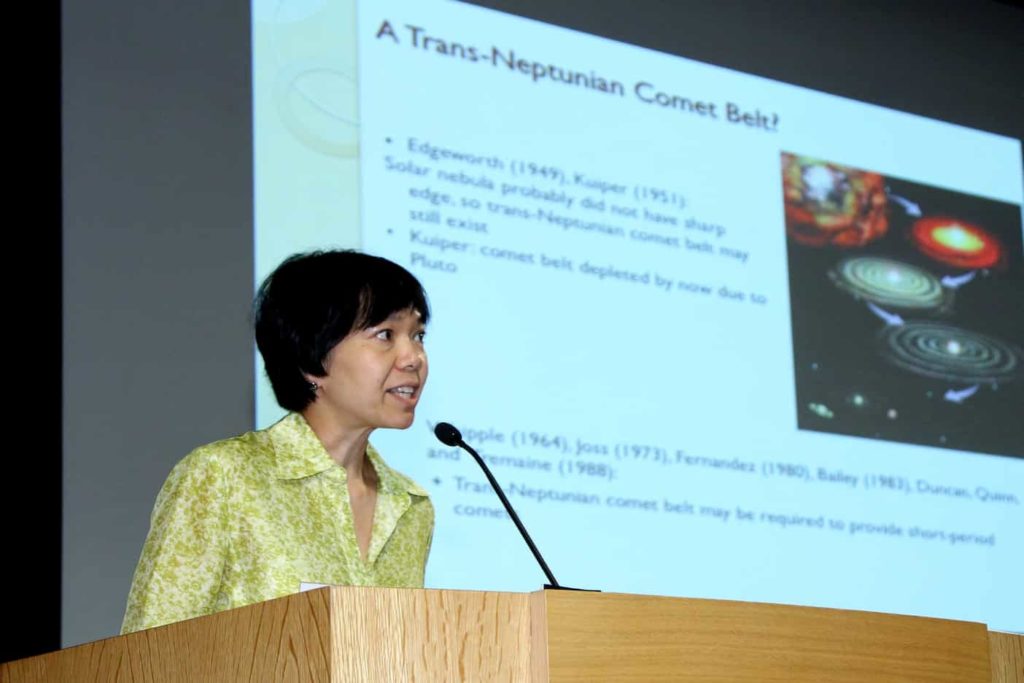
Jane Lee giving a lecture.
Shrinivas Kulkarni
Shrinivas Kulkarni, born 1956, is an Indian astronomer based in the United States and currently working as a professor of astronomy and planetary science at the California Institute of Technology. He gained the majority of his qualifications in India before gaining his PhD at the University of California in 1983.
Shrinivas has become well known for his key discovers that have opened up new sub-fields within astronomy, and he was the first to discover the millisecond pulsar (MSP) PSR B1937+21 and this ended up being significant as the rational period of this pulsar was far shorter than what astronomers had previously considered pulsars capable of reaching.
This then led to the theories being formed around how pulsars could be sped up, and this particular pulsar became significant as it is one of the only pulsars that occasionally gives off strong pulses, and this has since been credited with helping revitalise research within the pulsar field!
Shrinivas and his team were also able to do the one thing that has been deemed extremely difficult to do, and that was to discover the existence of brown dwarfs! Years of research resulted in the discovery that helped astronomers bridge the gap between large planets and the smallest true stars, and whilst a theory already existed about brown dwarfs, it was only a theory until Shrinivas, and his team were able to prove this theory correct!

Shrinivas Kulkarni won the Dan David Prize in 2017. (Credit: Truc Nguyen)
Wang Zhenyi (1768 - 1797)
Wang Zhenyi was a scientist from the Qing dynasty of 18th century China that is well known for her work in astronomy, maths, and poetry. At the time, women’s right to study as they wished was completely hindered so Wang worked extremely hard to study these subjects, also including geography and medicine, and went on to make incredible contributions as a self-taught scientist. She was born into a very academic family so was surrounded by the need for knowledge and to ever discover more; which is how she spent most of her life! Always learning and wanting to learn more.
Wang was ahead of her time, fighting for women’s rights but also believing in equal rights and equal opportunities for both men and women as this was evident from the poetry she wrote; pieces that can still be read today. Before her unfortunate death at the young age of 29, Wang ended up being incredibly accomplished within the academic world and excelled in astronomy and mathematics especially.
Whilst she did indeed study the other work of astronomers, she was able to perform all of her own original research to prove and back up what she was doing, Wang went on to write multiple articles in astronomy with one being “Dispute of the Procession of the Equinoxes” in which she was able to explain and provide an explanation on how equinoxes move and then how it was possible to also calculate their movement.
Wang wrote many other articles, some of which went on to explain the relationship between the lunar and solar eclipses, and in one article name “The Explanation of a Solar Eclipse” she was able to perform an experiment that consisted of placing a round table in a garden pavilion, with the intention of it acting as a globe, and then hung a crystal lamp above it to represent the sun.
On one side of the table, she included a round mirror to represent the moon and began to move the 3 objects as if they represented the sun, the moon, and the Earth, based on their astronomical properties, and was able to replicate the occurrence of what is observed during a solar eclipse – this was something still largely believed to have been caused by the Gods still at this time.
Unfortunately, a lot of her work has been lost over the passing centuries, but in 2004 the International Astronomical Union recognised her achievements and named a crater on Venus after her.
Abd al-Rahman al-Sufi (903 AD - 986 AD)
Abd al-Rahman al-Sufi was a Persian astronomer, also known as one of the nine famous Muslim astronomers, has very little known about him prior to his work in astronomy, and is most notably famous for his observation of the Andromeda Galaxy in 964 AD, describing it at the time as a “small cloud”, but this was the first recorded mentions of this galaxy.
He also changed the way we view the stars, as he ended up dedicating his life to understanding the stars and their constellations. One of his greatest pieces of work involved fact-checking Ptolemy’s (a Greek astronomer) measurements of the brightness and size of the stars.
Most of which he ended up agreeing with the Greek astronomer’s findings, but he also improved upon the existing work by illustrating constellations and correcting some of Ptolmey’s incorrect observations, these are findings that have stuck with the astronomy field up until even now.
Debra Fischer
Debra Fischer, born in 1953, is an American astronomer with very little known about her life prior to her receiving her degree in 1975 at the University of Iowa. However, Fischer has become an influential figure in the world of astronomy due to her discovery of multiple planet systems in 1999.
Her research for exoplanets started 2 years prior to that, in 1997, in which she was using doppler shifts amongst the stars, and this method resulted in Debra being able to discover over hundreds of exoplanets. Due to her analysis of the stars, she was able to demonstrate that gas giants were highly likely to form around stars with a “higher abundance of heavy elements”, meaning elements present in an object heavier than helium or hydrogen (as most physical matter in the Universe is either helium or hydrogen), and this then lead to her quantifying the famous “planet-metallicity” correlation.
Beyond this discovery, she went on to lead an international group, between 2003 – 2008, to conduct research on Jupiters orbiting metal-rich stars, this project resulted in the discover of 30 new extrasolar planets – a planet outside the solar system! Presently, Fischer’s team is working on a new spectrograph, for the next-generation of tech, and creating a ‘laser frequency comb’ that will provide spectrograph wavelength stability which is greater than 10cm’s per second with the intent of finding Earth’s analogs around other stars; something currently near impossible to do due to the small size of Earth and the available equipment at present.
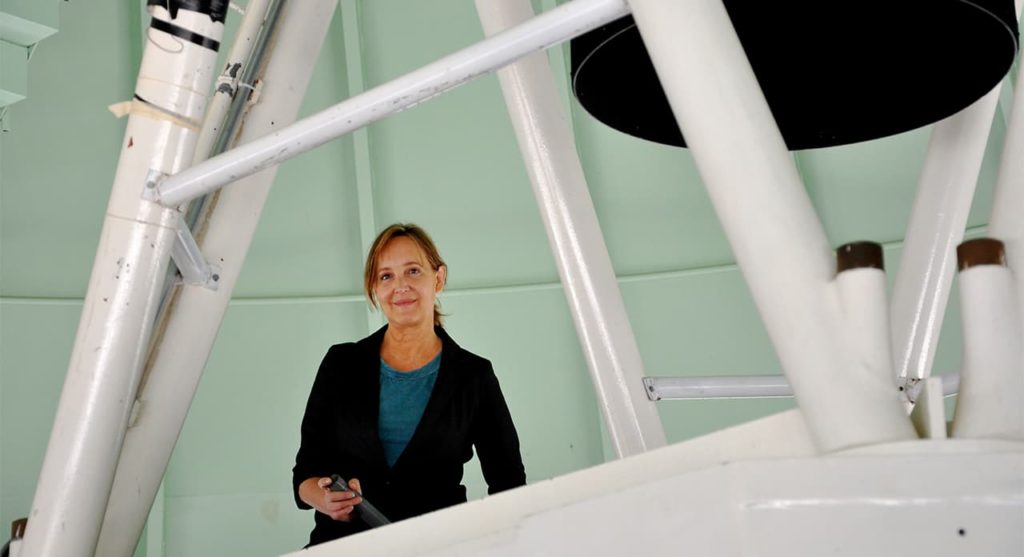
Debra Fischer at the Cerro Tololo Inter-American Observatory in Chile.
Edmond Halley (1656 - 1742)
Edmond Halley (1656 – 1742) was an English astronomer who is most notably famous for Halley’s comet! It was during his childhood that he developed a love for astronomy and he focused on this field throughout his entire academic life. Apart from Halley’s comet, he also is known for his discovery of a star cluster in Centaurus whilst he was cataloguing stars in the Southern Hemisphere.
Edmond also went on to make the very first observations of the transit of Mercury and came to realise that a similar transit of Venus could be used to measure the size of the solar system.
Drawing back to Halley’s comet, arguably the most famous comet, this ended up being named after Edmond as he was the one who accurately concluded that this comet that would periodically return over and over was the same comet and not 3 different ones as previously believed.
He predicted it would return again in 1758 and whilst he didn’t live to see it, he was indeed correct in his prediction, it was the same comet. This led to the discovery, via his own calculations, that there are some comets present in the solar system that does indeed orbit the sun.
Whilst it’s hard to conduct any research on Halley’s comet for decades at a time, depending upon its distance, it has led to further research on other comets astronomers can observe and analyse with greater ease and helped push our understanding of comets even further.
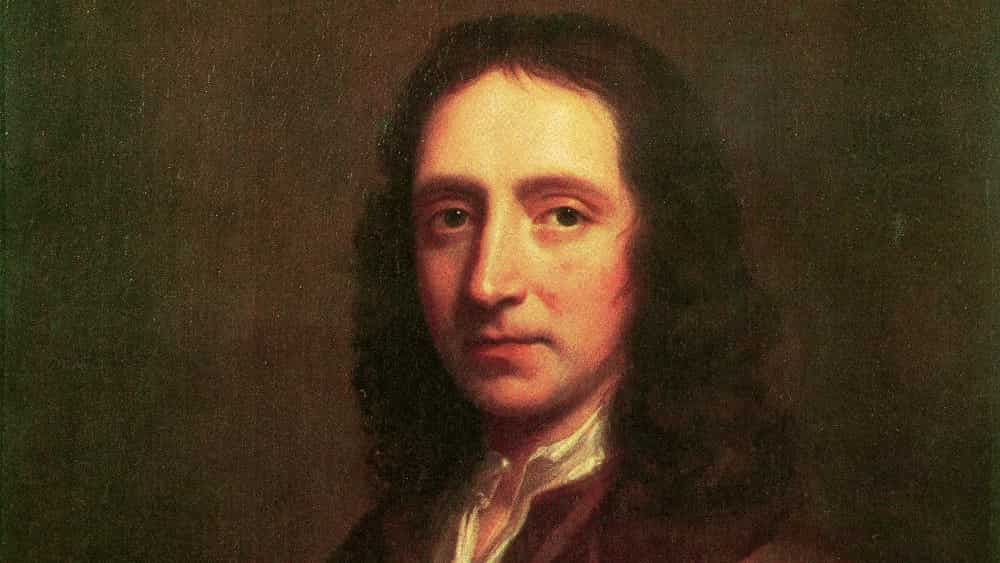
Edmond Halley was a scientific prodigy
Stephen Hawking (1942 - 2018)
Stephen Hawking was a British theoretical physicist, cosmologist, and author born on January 8, 1942, in Oxford, England. One of Hawking’s most notable accomplishments was his theoretical prediction that black holes emit radiation, now known as Hawking radiation.
In addition to his contributions to astronomy, Hawking also made significant advances in the field of theoretical physics. He developed a mathematical model of the universe known as the Hawking-Penrose theorems, which showed that the universe must have begun with a singularity.
Despite being diagnosed with Amyotrophic Lateral Sclerosis (ALS) at the age of 21 and losing the ability to speak and move, Hawking continued to work and make groundbreaking contributions to the fields of astronomy and physics. He wrote several best-selling books on his theories and research, including “A Brief History of Time” and “The Grand Design,” and he was awarded numerous accolades and honours throughout his career.
Hawking passed away on March 14, 2018, but his contributions to astronomy will be remembered for generations to come.
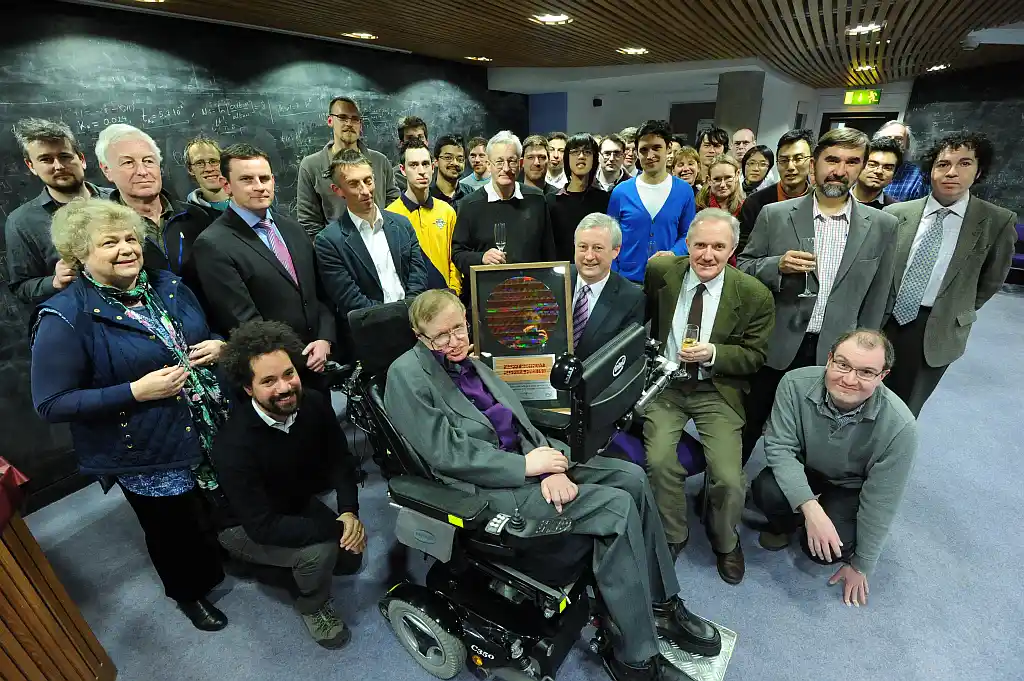
Stephen Hawking was loved by many around the world. Image credit: Intel Free Press
Galileo Galilei (1564 - 1642)
Galileo Galilei was an Italian astronomer and scientist who made groundbreaking discoveries in the field of astronomy. His observations paved the way for further exploration of the universe and helped to expand our understanding of the solar system:
- He found that the Moon has mountains, craters and valleys, similar to the Earth.
- He discovered that Venus has phases, like the Moon.
- He discovered the four largest moons of Jupiter, now known as the Galilean moons: Ganymede, Io, Europa and Callisto.
- He discovered the laws of falling bodies, now known as Galileo’s law of inertia.
- He discovered that the Milky Way is composed of stars.
Contrary to popular belief, he did not invent the first telescope. However, he greatly improved their design and managed to make some very cool discoveries with it! That’s not bad for someone who had a very rudimentary telescope compared to what is available on the market these days.
His life was heavily influenced by religious persecution as he was declared a heretic for defending heliocentrism and his ideas were not accepted until much later. Galileo’s discoveries are still being studied and referenced today, making him one of the most important figures in modern astronomy.
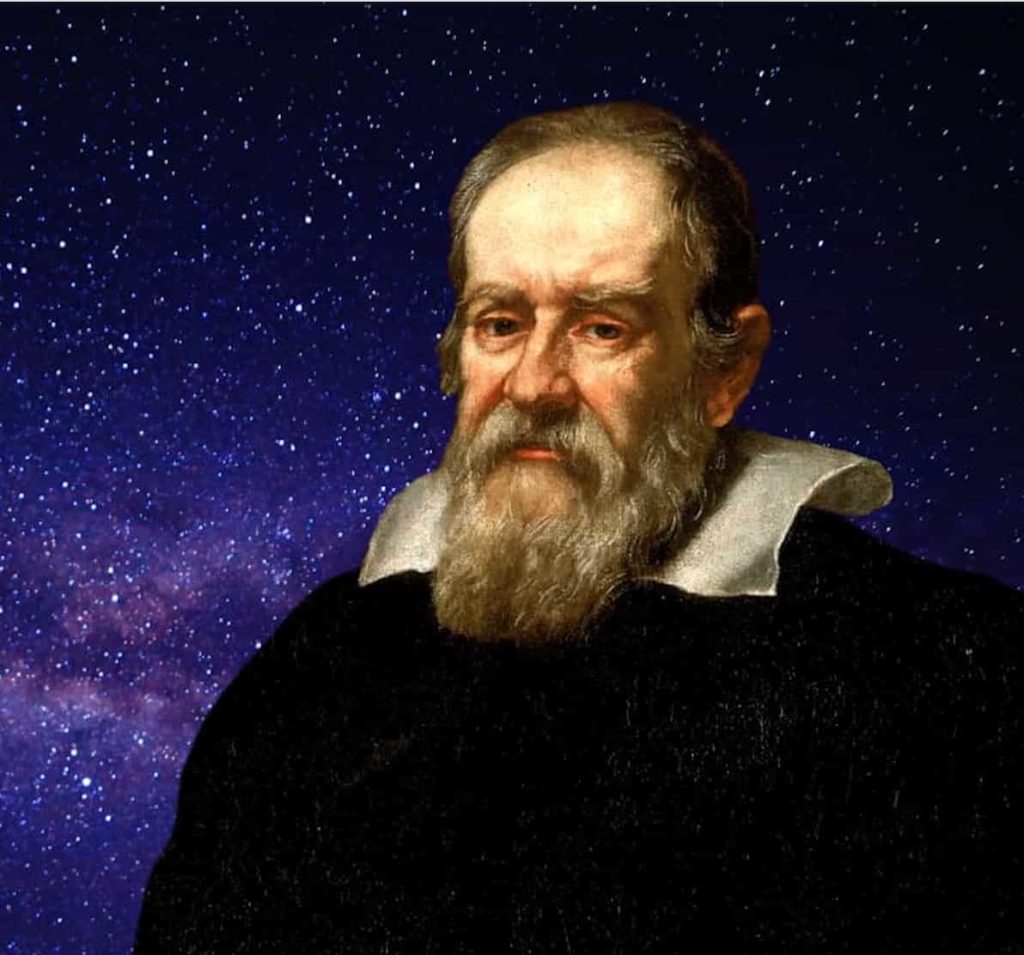
Galileo Galilei was one of the first scientists to use a telescope to study the night sky.
Nicolaus Copernicus (1473 - 1543)
Nicolaus Copernicus (1473-1543) was a Polish astronomer who proposed that the Sun is at the centre of the Solar System. This idea contradicted the widely accepted view of his time, which was that the Earth was at the centre of the universe. His heliocentric theory was one of the most important breakthroughs in science and played an important role in the scientific revolution that took place at that time.
His major astronomical work, “De Revolutionibus Orbium Coelestium Libri Vi”, or “On the Revolutions of the Heavenly Spheres, where he expanded on the heliocentric theory, was only published after his death. Unfortunately, his work was not accepted as it was contradicting too many religious and scientific beliefs of the time.
It’s only a couple of centuries later that a new light was shed on Copernicus’s theory thanks to Isaac Newton and his work on celestial mechanics. Turns out, whilst flawed in some parts, Copernicus’s theory was mostly right.
Copernicus’ achievements as an astronomer, mathematician and scientist are still remembered today and have earned him the title of “father of modern astronomy”.
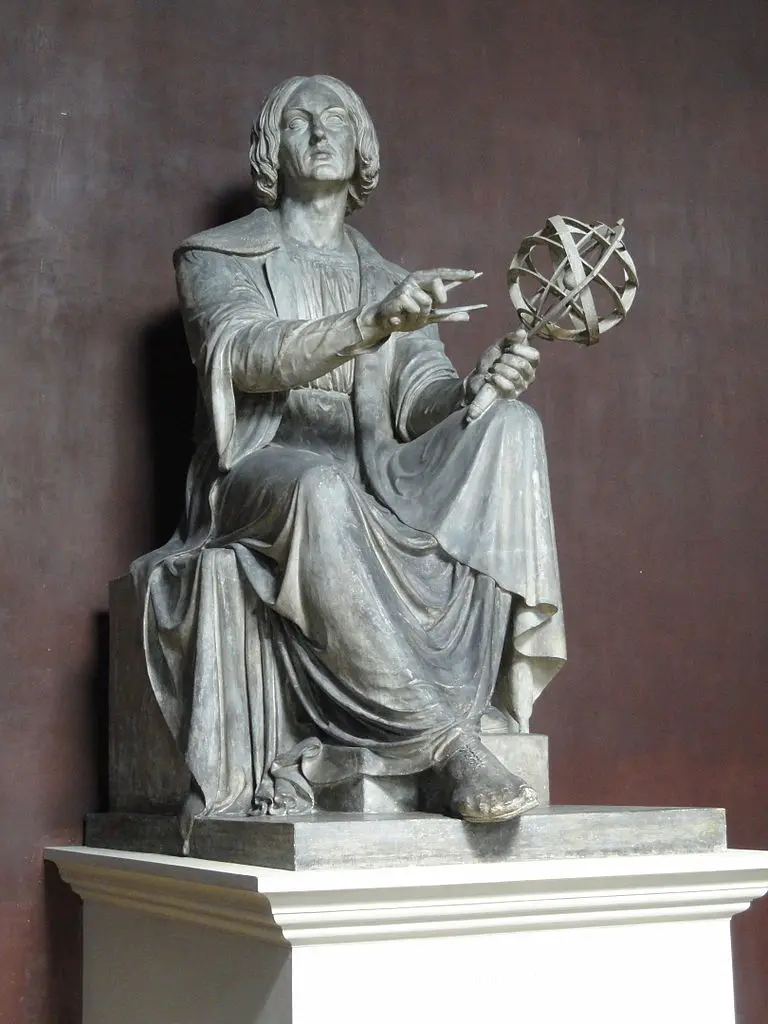
Copernicus developed the first mathematical model of a heliocentric (Sun-centered) solar system.
Final Thoughts
Our understanding surrounding the universe and everything in between, and beyond, is ever evolving, ever changing, because of scientific advancements which lead to new discoveries or being able to demonstrate theories or prove something else entirely against what was once believed.
Our work surrounding understanding the universe is far from over, and current and all future astronomers must be supported and respected just as those that came before them. The astronomers discussed in this article may have paved the way for what we know now, but with our technology always improving and new discoveries always being made, who knows what else is out there waiting to be found?
The universe still offers so many questions, so many discoveries waiting to happen, who knows what the astronomers of tomorrow will find and who knows what will benefit us as humans and all life on Earth – and if said life moves beyond this planet and onto the next celestial body, it’s astronomers that will guide the way for the future of humanity if that is the path we are lead down.

Written by Amy Gent
A spiritual witch and Mother of 2, preferring the lore of my own reality! Outside the weird and wonderful world of my craft, I like to cosplay and fully dive into the fantasy genre across all forms, from books to video games and everything in between. Check out her Instagram.
Wow! There's more to read 🚀
This page is part of our collection of articles about astronomy. If you enjoyed the read, then you’ll love the following articles.
The French astronomer Charles Messier created this catalogue which is now widely used in the astronomical community…
Although astronomy and astrology both relate to the different objects that can be found in our universe, there are some fundamental differences between the two.
Asteroids are classed into different groups depending on their composition and where they formed in the solar system.

